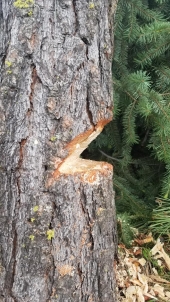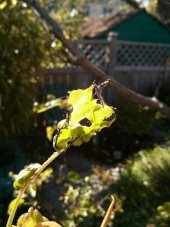
 1
1




 2
2




Myrth
https://ello.co/myrthcowgirl
 2
2




 3
3




![Filename: 23E29C63-2B92-4672-A912-33508DB3D7D4.jpeg
Description: [Thumbnail for 23E29C63-2B92-4672-A912-33508DB3D7D4.jpeg]](/t/102773/a/72099/23E29C63-2B92-4672-A912-33508DB3D7D4.jpeg)
Myrth
https://ello.co/myrthcowgirl
 2
2




 2
2




bob day wrote:getting them when they are real young is a great idea, and it's good to hear your methods that you've had so much success with.. Also, all soils are not created equal, I have dug up taproots here that hit our rock clay mixture and went down 6 inches and sideways about 20 feet .
Myrth
https://ello.co/myrthcowgirl
 2
2




Standing on the shoulders of giants. Giants with dirt under their nails
 2
2








Adam Alexander wrote:I didn't realize they have such deep taproots. I guess that's why they are pioneer trees. I'm glad to know they are working so hard. Also great to know how beneficial they will be even after they are gone. I can certainly find plenty that are still small enough to transplant but still not sure if I should use them for our windbreak. As far as pruning is concerned the biggest are 50 ft tall and I'm not a fan of heights so I won't be able to prune them enough I'm afraid. The main reason I originally planned on using them for our windbreak is because they are free and money is always a deciding factor. I also considered using willow and mulberry cuttings (also free) to make a living fence but I don't think it would work as good for windbreak and would be a more time consuming project. Our land hasn't been farmed forever which means nature has already been working hard at repairing previous damage done and the overall health is great. Unfortunately it also means that I am nearly starting from scratch and always have more projects to do than time and money allow.
Myrth
https://ello.co/myrthcowgirl
 3
3




 3
3




Gardens in my mind never need water
Castles in the air never have a wet basement
Well made buildings are fractal -- equally intelligent design at every level of detail.
Bright sparks remind others that they too can dance
What I am looking for is looking for me too!





Myrth
https://ello.co/myrthcowgirl
 3
3




But if you can arrest the CAR in your fruits, it will remove the alternate host for your redcedars.
WE can still be friends, but I'm not sure we can still hang out much :)Apples aren't required in the universe :)
Standing on the shoulders of giants. Giants with dirt under their nails




Tj Jefferson wrote: I am working on breeding some that are resistant, check back in five years.
Myrth
https://ello.co/myrthcowgirl
 2
2




Tj Jefferson wrote:
WE can still be friends, but I'm not sure we can still hang out much :)Apples aren't required in the universe :)
Gardens in my mind never need water
Castles in the air never have a wet basement
Well made buildings are fractal -- equally intelligent design at every level of detail.
Bright sparks remind others that they too can dance
What I am looking for is looking for me too!

 3
3




Standing on the shoulders of giants. Giants with dirt under their nails

|
It is difficult to free fools from the chains they revere - Voltair
Rocket Mass Heater Resources Wiki
https://permies.com/w/rmh-resources
|






